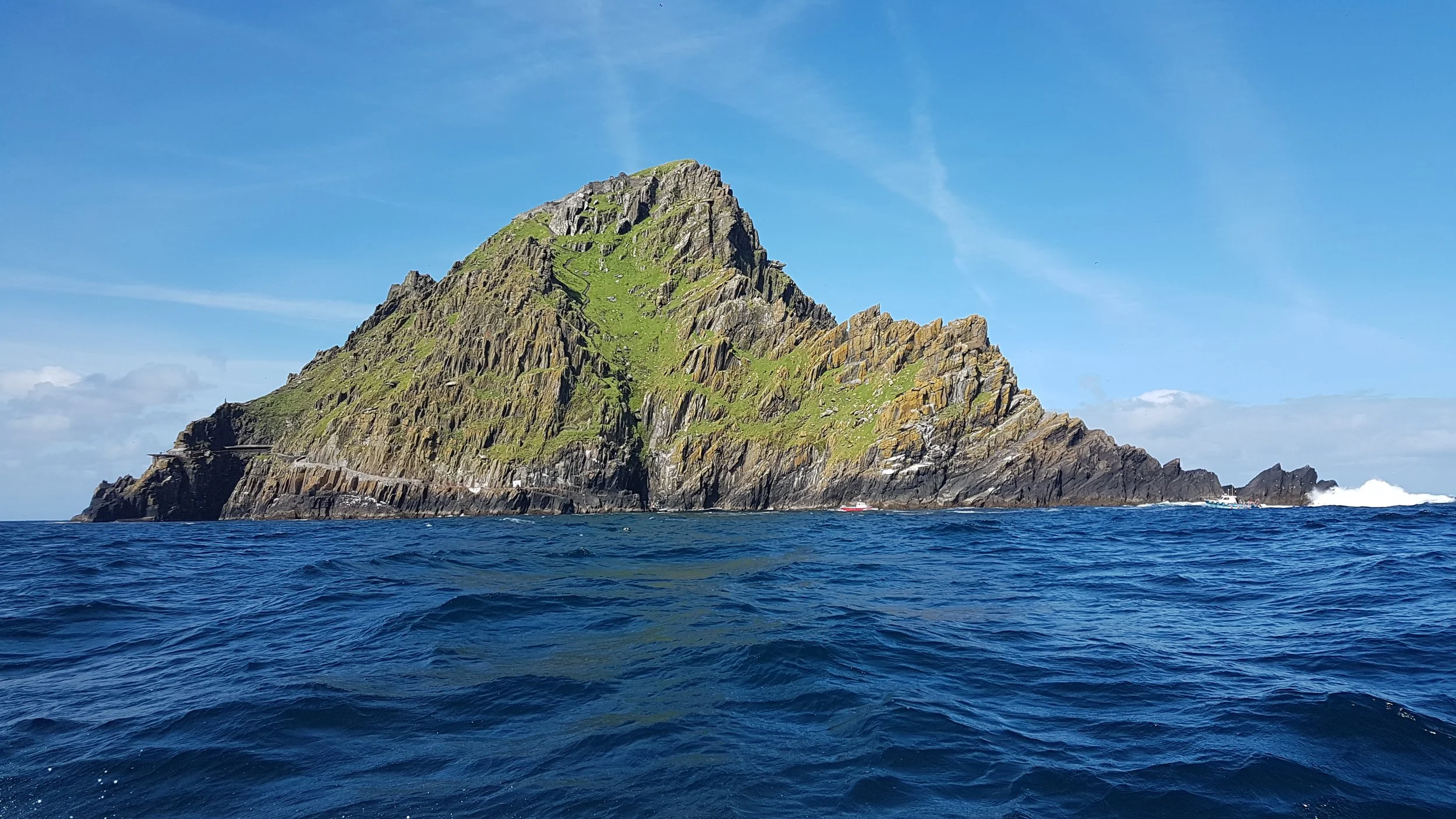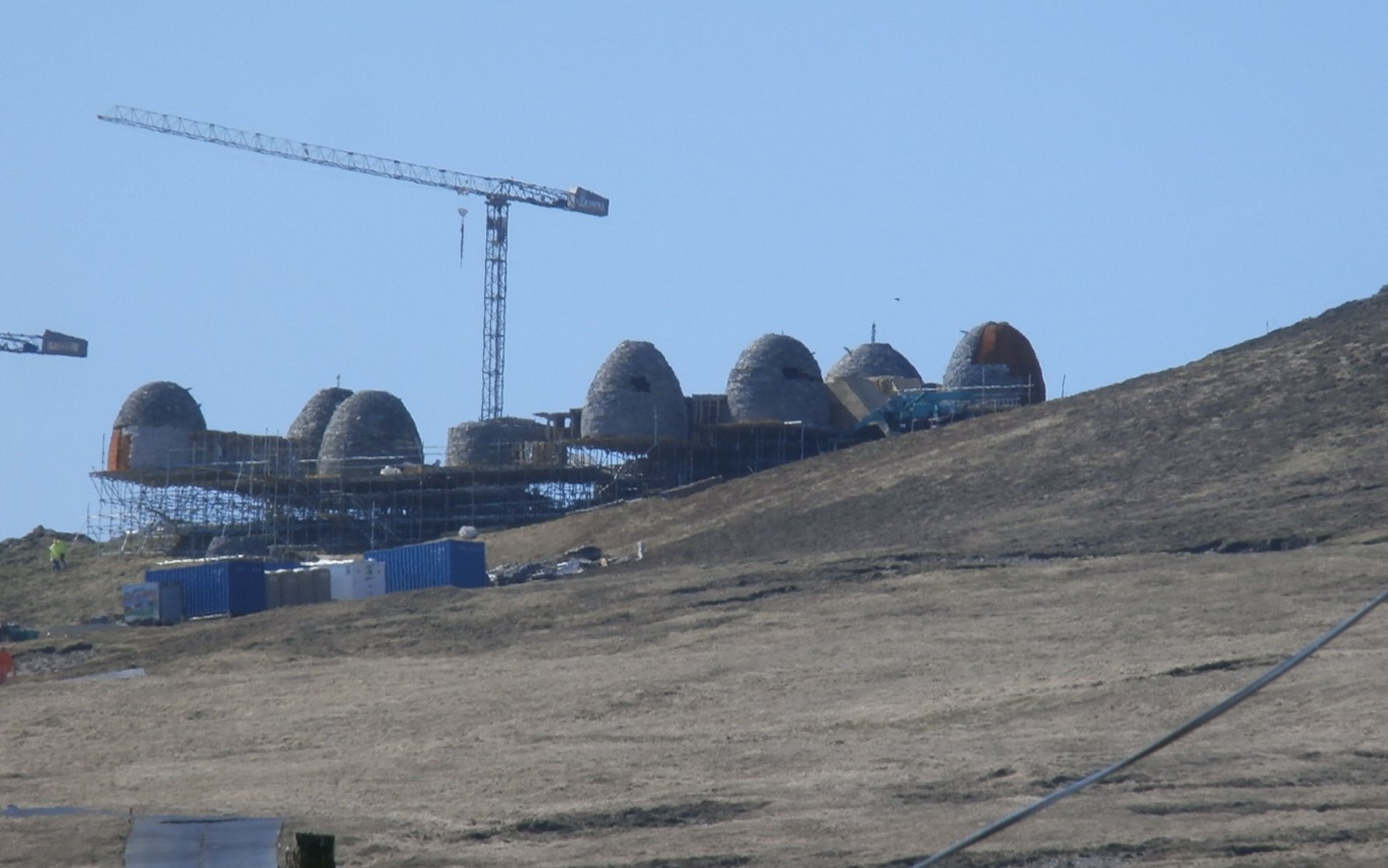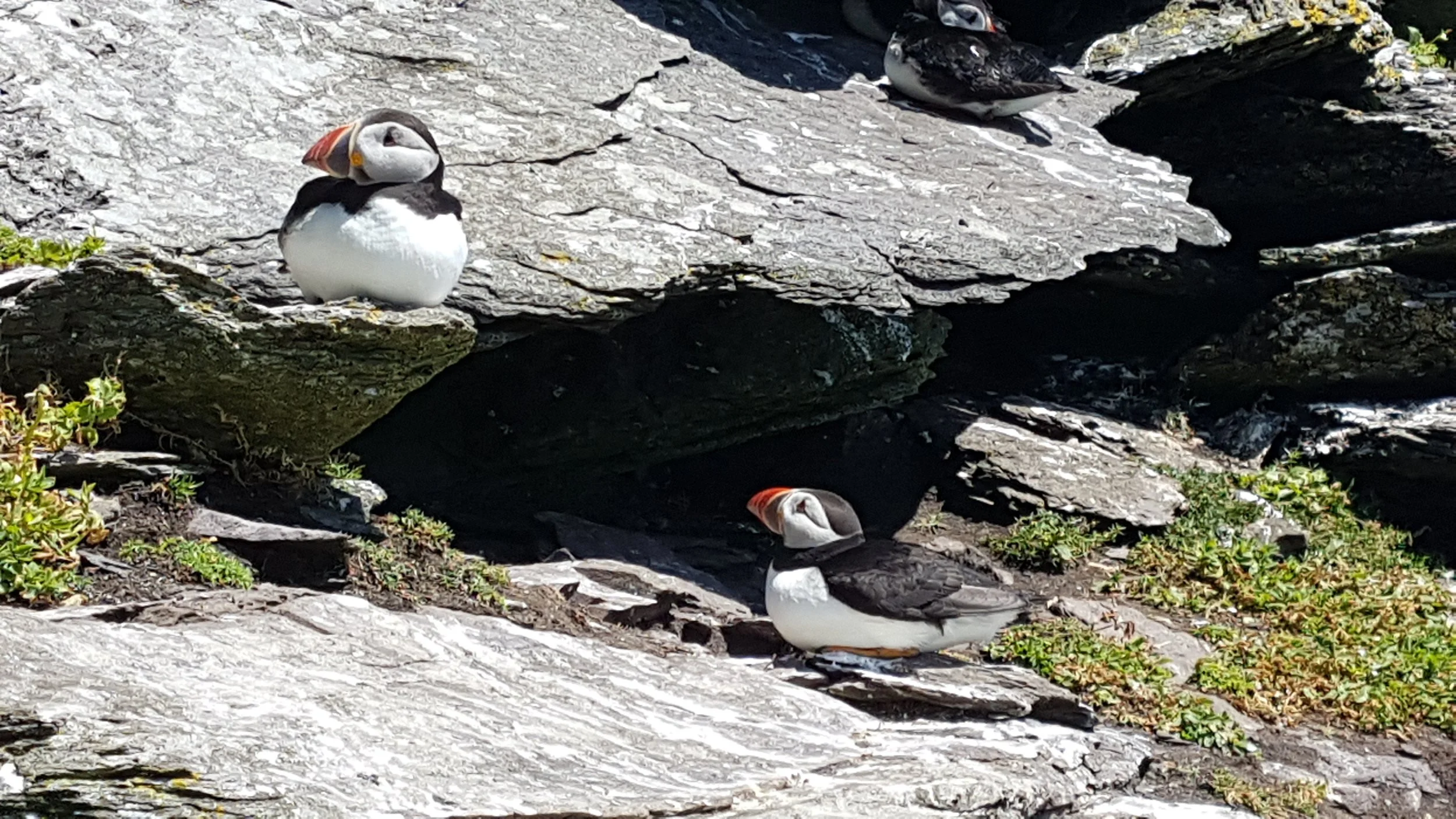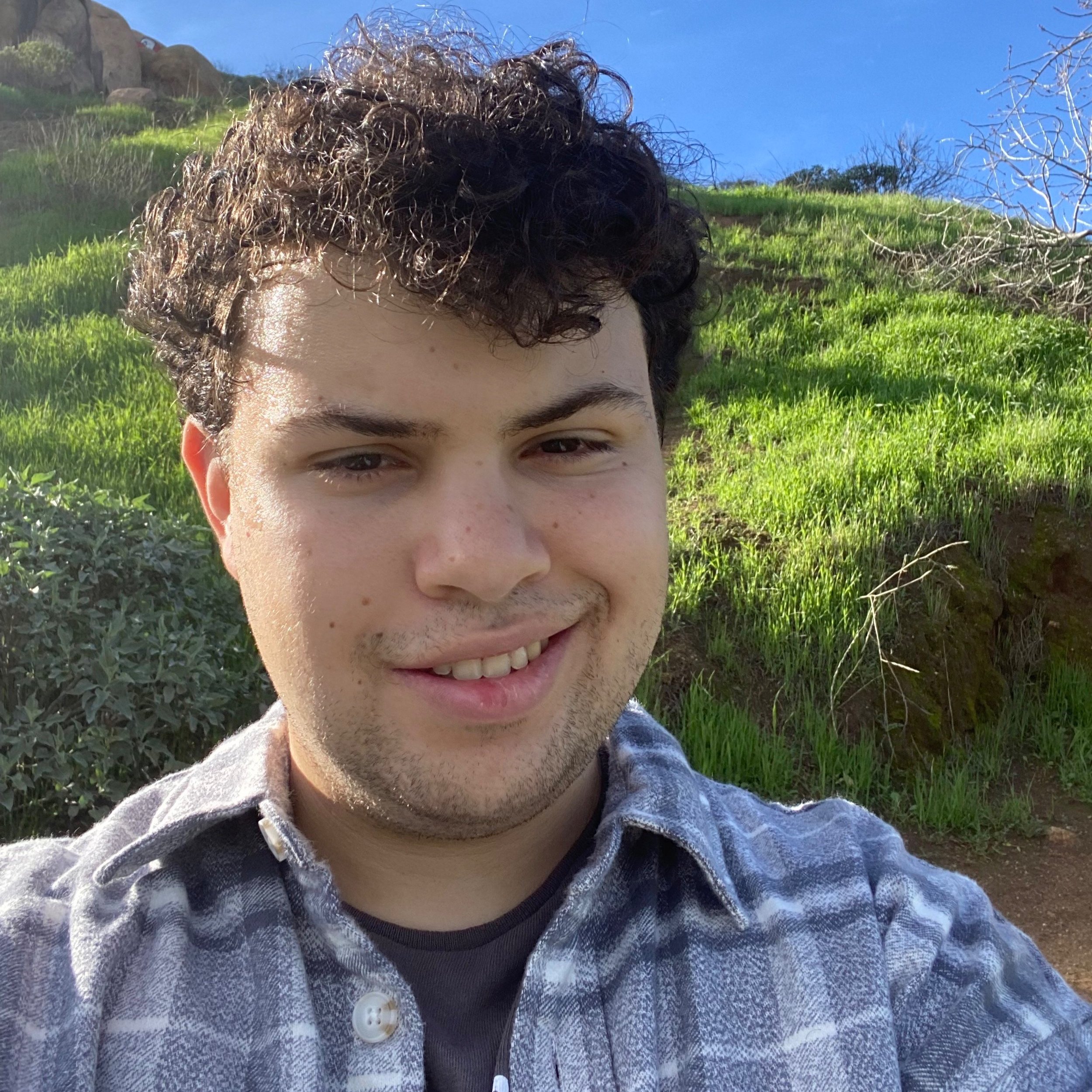The island where fantasy meets reality.
Skellig Michael, Stinglehammer, CC BY-SA 4.0
Between the 6th and 8th century, about a dozen monks devoted to St. Fionán sailed 8 miles away from the Irish coast through unpredictable and often violent weather to reach their new home, the jutting rock of Skellig Michael. Once there, they scaled the steep mountain all the way to the top, building beehive-shaped huts out of stone to live in. Once on that lonely isle they centered their lives around God, praying seven times a day. Without cattle or other sources of food they survived off of fish, seabirds, and the vegetables they could grow in their monastery gardens. Generations of determined monks lived there for over 600 years, surviving multiple viking raids, before climate change forced them to leave.They built their homes so well that even today, over 1,400 years later, their original stone huts still stand on the island.
Skellig Michael Beehive Cells, Arian Zwegers, CC BY 2.0
In the far away world of Star Wars, Skellig Michael, renamed to Ahch-To, is where the monastic Jedi Order was born. It is there that the ancient Jedi texts are located. Longtime protagonist Luke Skywalker spent many years searching for the birthplace of the Jedi, eventually realizing it was Ahch-To. It became the natural place to seek exile once his Jedi Temple was destroyed. At least, until he was found by next-generation hero Ray at the end of Star Wars VII: The Force Awakens.
Mystical Skellig Michael, Beyourbest2, CC BY-SA 4.0
Today, Skellig Michael, or “Ahch-To” as it's affectionately known by Star Wars fans, is both a UNESCO World Heritage Site and likely the most stunning film location in one of the highest grossing movies in U.S. box office history.
When he was first sent a picture of Skellig Michael JJ Abrams, the creator of the three newest Star Wars films, immediately emailed back “this is the best,” He quickly decided to film there, despite incredible difficulties. Due to the island’s unstable weather conditions only the most iconic shots were done on Skellig Michael itself, with the rest being filmed in different locations throughout Ireland. In addition, Abrams used more than the island’s physical structures. He based the adorable birdlike Porgs on the island in the Star Wars movies on the real life puffins that scamper all over Skellig Michael in real life.
Star Wars Filming Location, Myrtle26, CC BY-SA 2.0
It's important to note that while shooting Star Wars on Skellig Michael gave the island a lot of publicity, it came at the cost of damage to the local ecosystem. Little Skellig, the sister island of Skellig Michael, is home to the second largest gannet colony in the world, and any helicopter used to fly in equipment risks knocking gannets out of the air. Skellig Michael itself is the home of rare seabirds. The first time the Star Wars crew shot on Skellig Michael was in July 2014, in the middle of seabird breeding season. By the time filming was done four of the sixteen conditions set to protect the island had been breached.
Puffins on Skellig Michael, Stinglehammer, CC BY-SA 4.0
Today, Skellig Michael can be visited between the Months of May and September. It is not, however, easy to reach. Only 180 people are permitted to visit Skellig Michael each day. Beyond that, about two days per week trips to Skellig Michael are canceled due to poor weather; due to scarcity, canceled voyages are almost impossible to reschedule.
Despite all of this, those persistent and lucky few who are able to venture to Skellig Michael are rewarded with the opportunity to see the spot where history and nature met Star Wars.
Jeremy Giles
Jeremy is a Writing Seminars and International Studies major at Johns Hopkins University. He is an avid writer and the Co-Founder of Writers’ Warehouse, Johns Hopkins’ first creative writing group. He is an advocate for Indigenous rights, and studies how Indigenous philosophies can be used to help prevent climate change. Using his writing, he hopes to bring attention to underrepresented voices in today’s world.






